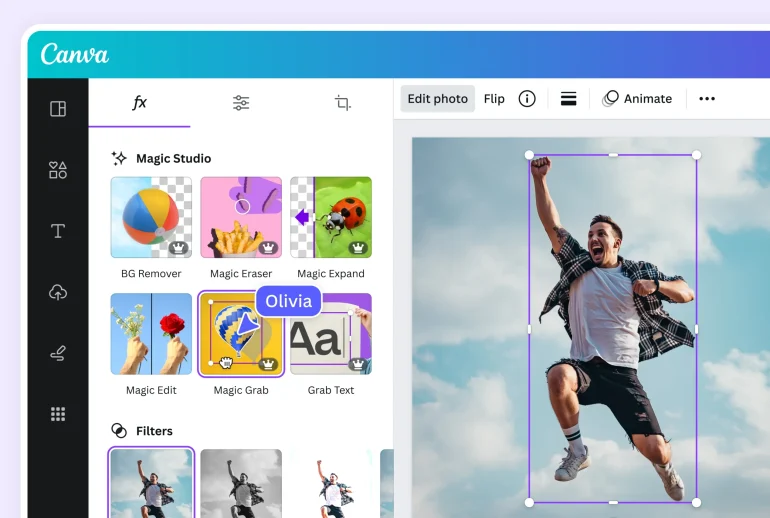She was a 19-year-old student in Perth, teaching classmates how to use design software that felt more like a punishment than a tool. Fast-forward, and Melanie Perkins is the co-founder of Canva, a platform with over 60 million users across 190 countries. But this isn’t a story about building a unicorn overnight. It’s about getting rejected over 100 times—until she changed one thing: the way she told the story. What happened next is a masterclass in simplicity, persistence, and selling the problem before the product.
From frustration to first vision
Melanie Perkins didn’t set out to build a billion-dollar business — she just wanted to make design easier for her classmates. But that simple pain point became the foundation for one of the most widely-used creative tools on the web.

A student with a side job and a sharp eye
In 2007, Melanie Perkins was a 19-year-old student at the University of Western Australia. She spent her time tutoring classmates in graphic design software — clunky, expensive programs like Photoshop and InDesign that required weeks of training. Most students hated the process. It was slow, technical, and intimidating. Melanie noticed the same frustration over and over. She wasn’t running a business yet — just a part-time gig. But what she saw was a massive disconnect between what people needed and what the tools were offering.
A simple question that sparked everything
Melanie didn’t start with a big tech dream. She started with a question: Why is this so complicated? That thought stuck with her. Design should be fast, intuitive, and accessible — not locked behind software licenses or steep learning curves. She teamed up with Cliff Obrecht, her now co-founder, and they launched Fusion Books, a web-based tool that let students design yearbooks online. It was a niche product, but it proved one thing: people would gladly use a simpler design tool if it existed. That insight laid the groundwork for Canva.
Building before they were ready
Melanie and Cliff didn’t have a startup pedigree or connections in Silicon Valley. But they had proof of concept. They used their Fusion Books success to show there was demand — then spent years refining their vision. They searched for tech partners, built early prototypes, and started pitching. Investors weren’t biting. Over 100 rejections came in. Still, they kept going. They improved their pitch decks, clarified their vision, and bootstrapped what they could. The first big breakthrough didn’t come from building more — it came from explaining the problem better.
From clearer messaging to global momentum
Once the pitch finally landed, Canva moved fast — not through hype or headlines, but by giving people a tool they instantly understood, needed, and shared.

Early traction, real users, and viral simplicity
The first version of Canva launched in 2013. Within months, the response was immediate: creators, marketers, teachers — people from all walks of life — started using it. The interface was clean, intuitive, and ran in the browser. No downloads, no steep learning curve. By 2015, Canva had over a million users. Word spread organically because the tool actually solved a real problem. Instead of telling people what it could do, Canva showed them. Drag, drop, done. Growth didn’t come from aggressive marketing — it came from clarity.
Growing pains and smart pivots
Canva’s early momentum didn’t shield it from challenges. The product team had to handle huge demand on limited infrastructure, while constantly shipping improvements. Competitors began to appear — some with more funding, others with niche angles. And then there was pressure from investors to “move faster.” But Perkins stayed focused on accessibility and simplicity. Her team resisted feature bloat, doubled down on design quality, and expanded templates to serve more use cases. Internally, they built systems that scaled quietly. Externally, they kept the story tight: Canva makes design easy, for everyone.
A quiet empire with creative impact
Today, Canva is used by over 135 million people in 190 countries, and it’s valued at over $25 billion. Teams, classrooms, solo creators — all rely on it daily to create everything from Instagram posts to pitch decks. The product has grown into a suite with AI tools, print services, and team collaboration features — yet still feels simple. Melanie Perkins isn’t chasing media attention. She’s focused on building a platform that empowers people to communicate visually, without friction. Canva didn’t just win because of design — it won because the problem it solved was clear to everyone.
Start with the problem, not the pitch. Show how your product helps real people, not just what it does. And when things get stuck, adjust the story — not always the solution. Melanie Perkins didn’t win because she shouted louder. She won because she made the value obvious. If you’re building something right now, ask yourself: would a total stranger understand why this matters? If not, it’s time to rewrite. Your next big breakthrough might not be in the product — but in how you explain it.


